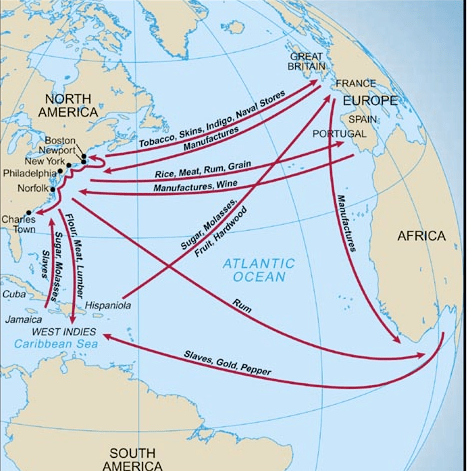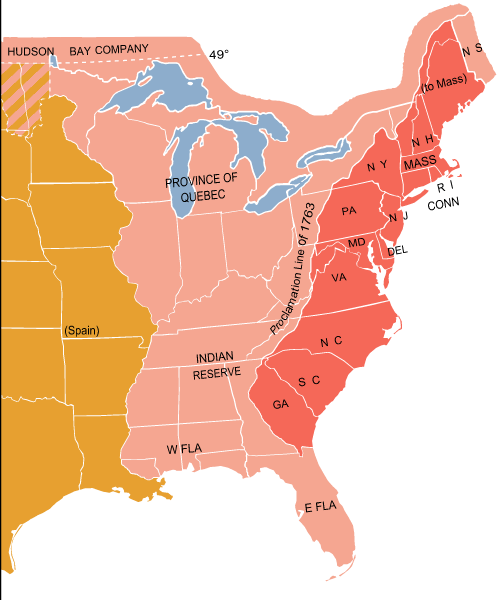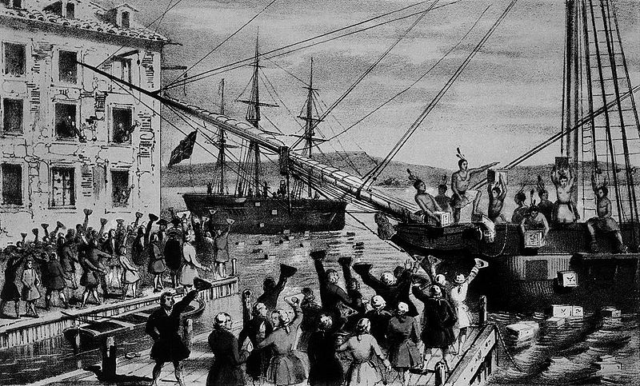Preamble: this is certainly not the first time the United States has gone berserk printing money in order to address its present woes. This habit dates back to the nation’s founding. Here is an excerpt from my Panic, Prosperity, and Progress book on one such instance:
When most American citizens are asked about the revolutionary war, they probably conjure up images of a freedom-loving populace striving to unchain themselves from their distant British overlords. In popular folklore, the year 1776 is the kicking-off point of a great political struggle which, led by the founding fathers, ultimately gave birth to our Constitution and a new land.
This is largely true, of course, but the American Revolution was as much about commerce and taxes as it was about political philosophy. The currency problems that the young nation grappled with during this period shaped the framework of our country, and the motivations behind the founding fathers’ fight against Britain was not always as pure as has been taught to schoolchildren for centuries.
North America, as a thinly populated land mass, offered its European settlers tremendous advantages that would be enjoyed for hundreds of years after its discovery in the late 15th century. It was a tremendously fertile land, replete with wildlife, vegetation, waterways, and natural resources that made it a vast, undiscovered treasure chest for its new inhabitants.
As the population tamed the wilderness in the late 17th and early 18th centuries, the thirteen colonies enjoyed a long period of robust and steady economic growth. Between 1650 and 1770, the economy of the American colonies expanded twenty-fold, and most historians agree that in spite of the abbreviated history of the colonial region, it already enjoyed in the 1870s the highest standard of living anywhere in the world.
The bounty of natural resources, coupled with the industrial nature of the colonists, were responsible for the economic abundance. The colonists exported rice, lumber, tobacco, and other valuable crops, and they did so in a business environment virtually free of taxes or tariffs. Besides a thriving export market to Europe, the colonists also enjoyed a prosperous trade relationship among each other.

Some of this prosperity was fueled by credit offered by the British, who were willing to lend money to the wealthy landowners in the colonies in support of an increasingly lush lifestyle. Per capita debt in the Virginia colony, for example, doubled between the mid-17th and mid-18th century, and the desire to “keep up with the Joneses” (or, more accurately, the Washingtons or the Jeffersons) compelled the rich and almost-rich to spend money on ostentatious luxury as visible evidence of their prosperity.
It was not necessarily the common man who would be agitating for revolution, but the landed gentry as well. The rich landowners of the colonies not only had creeping debts to worry about, but many other economic motivations as well, from intrusive British laws to issues related to slave ownership.
The skewed nature of slave ownership makes this issue easier to comprehend: in 1775, a full 40% of the population of Virginia were slaves. Although half of the white Virginians owned at least one slave, the richest 10% owned the vast majority of the slaves. The upper one-tenth of white Virginians owned half of all the land, and the overwhelming majority of white Virginians had very little in the way of property and were far more vulnerable to boycotts and political turmoil than their wealthier compatriots.
Because of this vulnerability, the richest in Virginia did not consider the majority of freeman to be reliable political partners, because their interests were so different. The risk of class warfare was very real, and as an actual fighting war approached, Britain made ample use of the potential divisions between slaves and their owners. After all, it would be hard for Britain to find a more dedicated soldier than a newly-freed, newly-armed slave to turn loose against his former master.
Intolerable Changes
Britain had, in the late 17th and early 18th centuries, engaged in a series of wars that had vastly increased its colonial holdings and worldwide wealth. There was the Nine Years War, the War of Spanish Succession, the War of Austrian Succession and, most germane to the forthcoming American Revolution, the Seven Years War (1756-1763) between Britain and France.
After winning the Seven Years War, Britain acquired from France all the land in North America east of the Mississippi River, in addition to Canada (from France) and Florida (from Spain). The North American colonies were no longer confined to the original thirteen colonies but instead constituted the entire eastern half of North America.

Up until 1763, the conclusion of the war, the colonists were content to be under the power and protection of the British crown. After all, the colonists enjoyed a thriving trade with Britain, virtually no interference or taxes of any kind, and a guarantee of protection from foreign invasion thanks to being part of the British empire. The colonies enjoyed all the benefits of being British with virtually none of the costs.
One of the few requirements laid down for the colonists was by way of the Navigation Acts, which required that the goods shipped to and from the colonies be on board ships that were constructed, owned, and staffed by the British. Given the importance of its thriving trade with Europe, and Britain in particular, this requirement was neither resented nor debated at its inception.
One important shift took place at the Seven Years War’s conclusion, however, pertaining to the land sandwiched between the Mississippi river and the Appalachian mountains. This huge area of land, prior to 1763, was French territory, so the British crown had no misgivings about encouraging the colonists to explore, tame, and settle this land. It was the widespread usurpation of this land by the British colonists which aggravated the French into war in the first place.
At the war’s end, however, France abandoned its claim to this territory, and Britain’s attitude toward this land reversed. Hungry to own the lucrative fur trade that was enjoyed in this region, Britain stated that the colonists were now foreclosed from owning, or even setting foot, on the land. Britain wanted all the settlers to return East to the colonies, making clear that the colonists would be excluded from this zone which, until 1763, they had been encouraged to settle. The new rules forbidding the colonists were formalized in The Proclamation of 1763.
To add salt to this very deep wound, the Proclamation also held that the territory would be patrolled by a standing army of 7,500 British soldiers, and that the funding of this occupation would be provided by none other than the colonists themselves. In short, the colonists who had been told to settle the land were notified, after they had accomplished this task, that they were now being evicted from their property and had to return far East to the colonies where they would be required to pay for the soldiers that would, at gunpoint, make sure they did not trespass to the western side of the Appalachian range.
The colonists, naturally, deeply resented this sudden change of fortune. From the British standpoint, it was high time that the colonists started paying more taxes, since British citizens paid up to fifty times more in taxes that the colonists. Britain also was straining over the debts it had incurred by fighting the Seven Years War, and it needed as much income as possible – be it from fur trade or from modest tax increases.
The desire to raise revenue via taxation did not end with the Proclamation of 1763 either. In 1764, the Sugar Act was passed, and the year after, the Stamp Act, both of which were crafted to extract revenue from the trading of goods. Also in 1765, the Quartering Act was passed, which required colonists to provide British soldiers with housing, food, and transportation as needed. So on top of paying for the soldiers that kept them from settling lands to the West, the colonists had to serve as host to the infantry in their own homes.
Protestations
The colonists did not accept all the new edicts from Parliament without protest. In 1765, nine of the thirteen colonies sent representatives to convene at the Stamp Act Congress in New York to discuss and implement a boycott of British good. The boycott was very effective (aided in large part by the relative self-sufficiency of the well-established colonies), and Britain’s manufacturers pleaded with Parliament to eliminate the act, as it was harming commerce. Parliament complied, repealing the new taxes, and it likewise repealed the Sugar and Stamp Acts. The initiative of the colonists paid off quickly and handsomely.
In a peculiar move, however, Parliament passed a broader series of new taxes in 1767 known as the Townshend Acts. The colonists were emboldened by their prior success with a boycott, and undertaking a similar action in protest, they again met with success: in 1770, Parliament repealed the Townshend levies with one minor exception: the tax on tea. Parliament was, for the sake of its own commerce, willing to repeal the majority of the taxes, but it wanted to make clear that it was not forsaking its right to tax the inhabitants of its colonies. Modest as the one remaining tax was, it was important symbolically in the statement that it made.
Three years later, Britain extended its control of the tea trade by demanding, by way of the Tea Act of 1773, that the only company allowed to ship tea to America would be its own British East India Company. That December, a group of colonists dressed as Indians, boarded the ships, and tossed hundreds of tea chests overboard (known today, of course, as the Boston Tea Party).

Britain was furious at the misbehavior of its formerly compliant colonists. Parliament passed a series of acts intended to get the colonies back into line: the Boston Port Act, the Massachusetts Government Act, the Quartering Act, and the Justice Act were swiftly put in place to close Boston’s port, alter Massachusetts’s governing charter, and once again require colonists to house British soldiers without compensation.
The worsening relationship between Britain and America compelled the colonial congress to reconvene in Philadelphia for what was deemed the First Continental Congress on September 5, 1774. Encouraged by the success of the boycotts of the past, the colonists decided to enact a colony-wide boycott of all British goods and demand of Parliament that it repeal all thirteen acts that were collectively described as “The Intolerable Acts” by the Americans. The Continental Congress stated to Britain that it was satisfied with the state of its relationship in 1763, and if the laws could be reverted so that the parties could return to that state of affairs enjoyed at that time, the discord could be eliminated.
Instead of agreeing to a peaceable settlement, Britain decided to crack down even harder on the colonies: it dispatched troops to occupy Boston, and the first shots of the American Revolution were fired in the spring of 1775 in Lexington and Concord, both in Massachusetts. A month later, the Second Continental Congress convened, and it was agreed that the time for peaceful compromise had passed. Instead, it was time to prepare for war, and in order to hold a war, they were going to need money.

